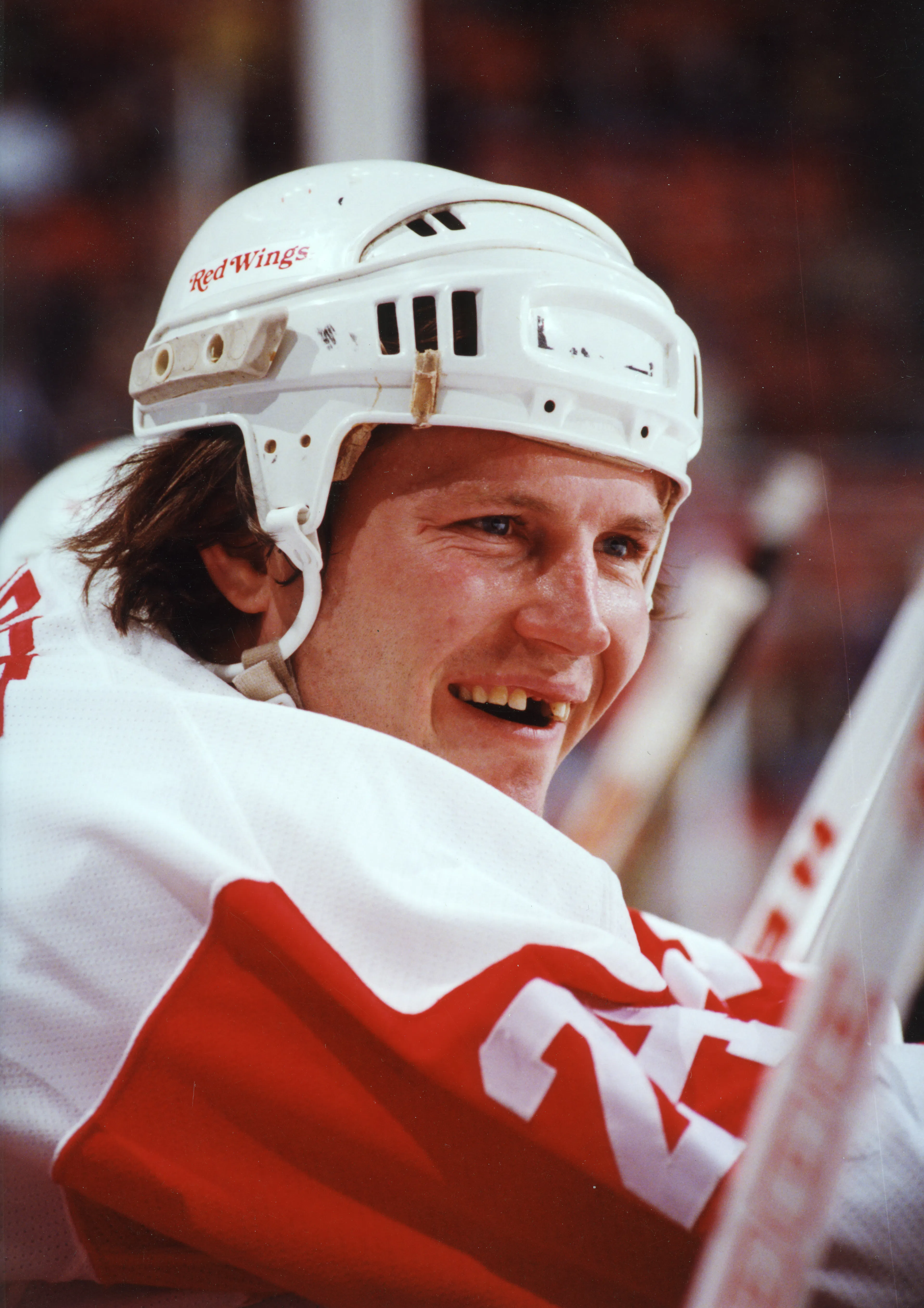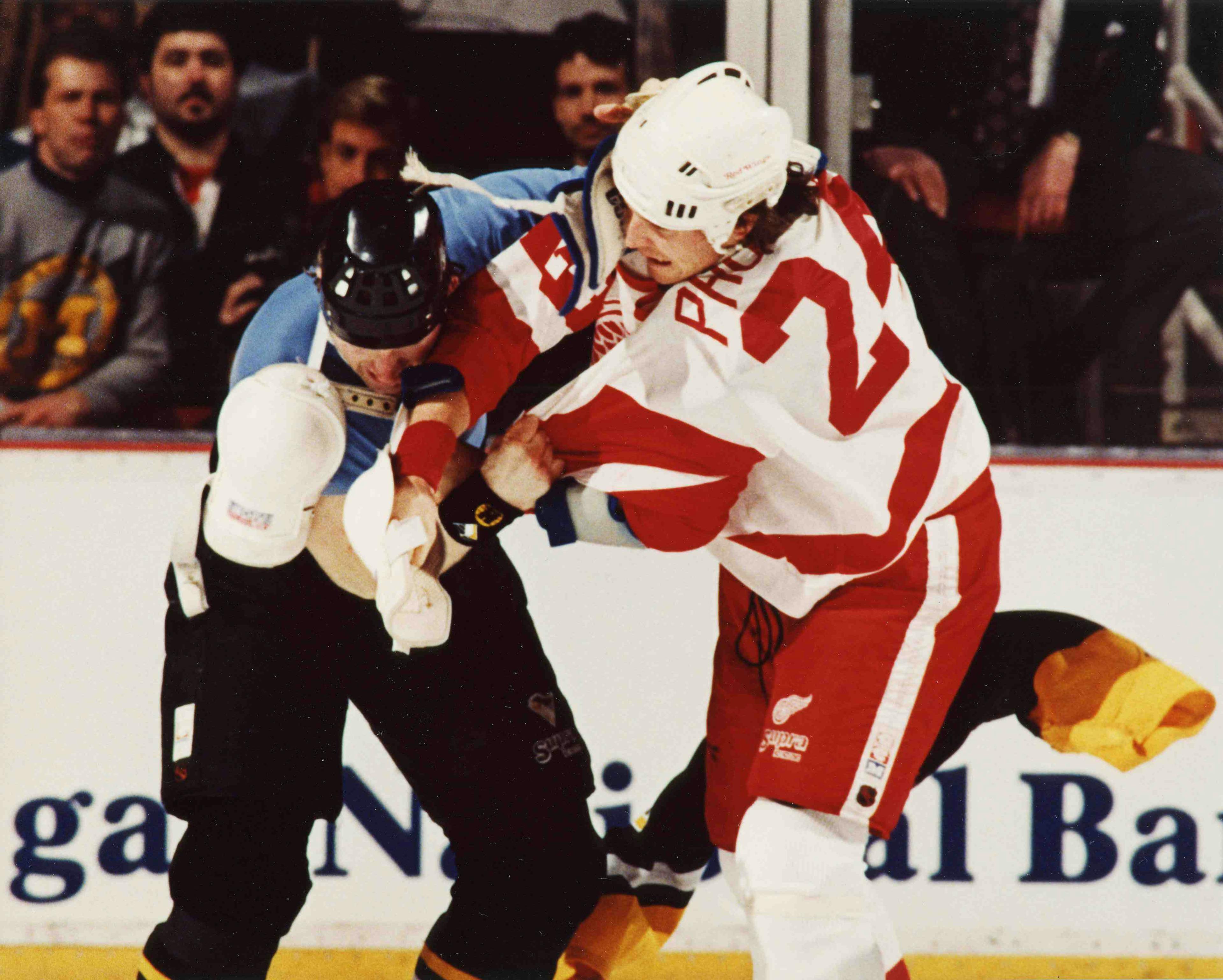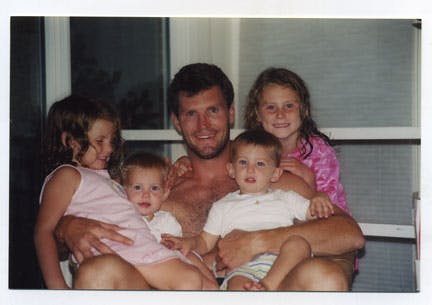“Tough Guy: The Bob Probert Story” Offers Intimate Portrait of Former Red Wings Enforcer

By Nick Seguin
5 years ago Don’t cry, be tough.

Early into the documentary about former NHL tough guy Bob Probert, these words are uttered by the man himself. A lesson he learned from his father, the words act as a loose thread that’s pulled, unravelling over the course of the film as it exposes every bump, bruise, and scar that Probert collected through his life.
Probert was (and still is) a fan favourite in Detroit, but his extracurriculars off the ice were as legendary as his fights on it. His struggles with drugs and alcohol were highly publicized, forcing the Red Wings to eventually cut ties with him after repeatedly sending him through rehab stints.
This is the Bob Probert the hockey world has always known. Until now.
Tough Guy: The Bob Probert Story shows us a different side of the Red Wings enforcer. Through extensive interviews with Probert’s family and friends, including archived interviews with the man himself, Producer/Director Geordie Day succeeds in showing us there was more to Probert than his tough guy persona.
Be tough.
The film starts in New York City with a fight. Madison Square Garden has been home to many a boxing match, but this one didn’t take place in a ring. It was at center ice during a game where the New York Rangers were hosting the Detroit Red Wings. The result of the game didn’t, and still doesn’t, matter. The story is the fight.
It was a time when Probert was at the top of the food chain in the NHL. A young Tie Domi wanted his shot at the champ and, after drawing blood, mimed highlighting a World Wrestling Federation championship belt around his waist on his way to the penalty box.
The sequence is narrated by Probert, dropping expletives through a frustration that would have you thinking the fight happened yesterday. That’s just how passionate of a guy Probert was.
“I’ve heard announcers say I get stronger as the fight goes on,” he said, describing his drive and endurance during a scrap. “You want to win so badly that you kind of overcome your tiredness.”
Probert’s voice is from audio interviews that he recorded while working on his autobiography up to a mere month before his passing in 2010. Day threads it through the film, allowing the ghost of Bob Probert to tell his story in his own words.
“That was pretty cool,” Day said to WingsNation. “There’s something really interesting that happens when you’re watching a person talking about their life after having passed. The goal was to allow him to tell the story and allow the family to tell the story.”
Day had the full participation from Probert’s family and friends, having interviewed his wife, Dani, his children, and his many friends and teammates.
“The goal was to humanize Bob. To empathize with him.”
It’s not an easy task considering the life that Bob Probert lived. Seemingly always in the news (and never for the right reasons), the film covers all of Probert’s troubles, from missing the Ontario Hockey League All-Star game in 1984 to the Goose Loonies fiasco during round one of the 1988 playoffs to his prison sentence for attempting to drunkenly smuggle 14.3 grams of cocaine across the border at seven o’clock in the morning.
Probert was the original “bad boy” of the NHL, dropping the gloves at every opportunity on the ice and totalling cars off of it. He certainly kept the Detroit media busy, but he transcended Detroit. Every hockey fan knew who Bob Probert was and what he did.

“He just kind of embodied the hockey culture in a way that I hadn’t seen before,” Day said. “He was a hockey player’s hockey player.”
Probert’s hockey is on full display throughout the film. It covers his 1988 All-Star Game appearance, the historic playoff run that saw him break Gordie Howe’s record for most playoff points in a season, and what felt like every punch he ever threw on the ice.
Don’t cry.
Day juxtaposes the viciousness of Probert’s on-ice style with the gentleness of who he was off the ice. “I found very interesting how complex of a character he was. I wanted to highlight the difference between his reputation and the way he actually was,” Day explains.
Through personal home video footage provided by Probert’s family, we see who he was as a family man – a loving, caring guy.
The video footage was complemented with interviews with Bob’s friends and family. Enough time had passed since having to complete the book that Dani Probert was ready to talk about Bob again.
She was a powerful force in Bob’s life who repeatedly stuck by him despite constant relapses and disappearances. Her commitment to telling her late husband’s story is essential to attaining this film’s ultimate goal. She speaks of Probert’s kind, loving, and sensitive nature.
So committed she was to ensuring his story is told properly that she agreed to return to the scene of his death in a powerful sequence that takes Dani out onto Lake St. Claire where Probert had the fatal heart attack on their family boat.
Reliving such a horrific moment of one’s life is the hardest thing to do, but Dani’s commitment to telling Bob’s story shows that Bob wasn’t the only tough one in the family.
Be tough.
Despite the subject of the film being the toughest S.O.B. in hockey, Day gracefully avoids turning the film’s focus to the role of the enforcer and the concussions they get along the way.
“We did touch on it in the film, but I think it’s more powerful to have an audience empathize with someone rather than try to get them to look at a topic objectively.”
Indeed, it’s hard to talk about Bob Probert without talking about how his role on the ice affected his mental state off of it.
“He had CTE,” Dani Probert admits, which sends us back into an interview with Domi, who, choking back tears, admits that he’s probably plagued by a form of the disease, but doesn’t want to know.
The admission is another reminder that even the toughest among us have their struggles. This human side of the enforcer is what drew Day to Probert’s story.
“I have a lot of respect for those that are honest about what happened in their life. When someone like [Probert], who’s known by so many people as a hockey star, is open in that way, I think it helps people feel better about their own struggles.”
And honest Probert was. Like he did in his book, he spoke candidly about his life. What the film offers that the book did not is the perspectives of those close to him. Those perspectives showed just how human Probert was.

“When I met his family and saw how healthy and smart and charismatic they all are, I think that was the most telling thing about him. If somebody has four incredible kids who speak so well of him, they must have done something right, right?”
In his film, Day answers his own question. Among all the wrong that Bob Probert did, he also did a lot of right. His family is proof of that and they continue to tell his story.
For Red Wings fans, the film offers plenty of archived clips from Probert’s playing days, including interviews with some fan favourites. This is not a hockey movie, though. Instead, it tells the story of a complicated man who lived fast, played hard, and loved fiercely.
Bob Probert was one of the toughest there ever was, but Tough Guy: The Bob Probert Story shows us that there was so much more to him than his fists. It’s a must-watch for any Red Wings fan who screamed, cheered, and gasped whenever #24 was on their screen.
Tough Guy: The Bob Probert Story is screening tonight in Detroit and Chicago and will be available on VOD on May 7, 2019.
Recent articles from Nick Seguin





